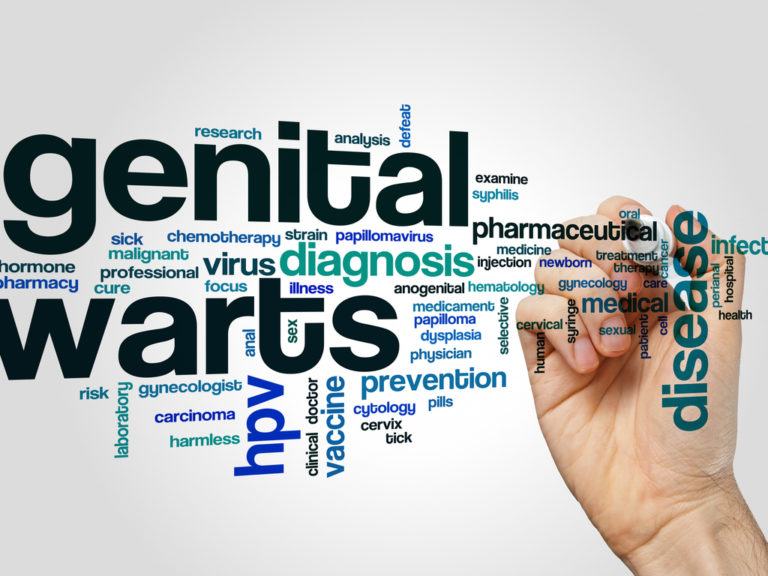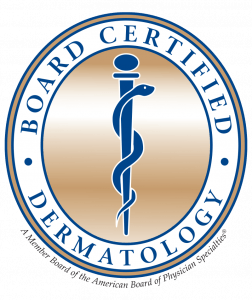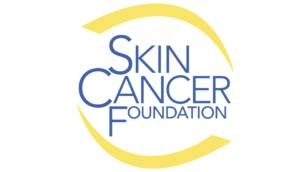
What are are genital warts?
*Genital warts, also known as condyloma acuminata, are the most common sexually transmitted infection in the United States.
*The CDC estimates that approximately 79 million Americans, mostly in their late teens and early 20s, are infected with Human papillomavirus (HPV)-the virus that causes genital warts.
*The prevalence rate of HPV in US adults is approximately 20%; however, most people are asymptomatic and have no visible signs of genital warts.1
*Evidence suggests that at least 50-75 % of sexually active adults have been infected with at least one genital HPV-type at some time in his/her life.1,2
Frequently Asked Questions (FAQ)
Genital warts may appear as a single lesion or as multiple lesions. Lesions may be flat, raised, smooth or cauliflower like, and can be flesh colored, white (in moist areas), tan, pink or brown color. Genital warts are typically present in the pubic region, groin, penis and scrotum (in men) and on the vulva, labia, or cervix (in women) and may be seen around the anal region in either se
Genital warts are caused by human papillomavirus (HPV) and are almost always spread by sexual contact (including oral, anal, and vaginal intercourse), but on occasion may be spread at the time of birth or through autoinoculation. HPV is highly contagious. Sexual contact with an HPV infected individual results in a 75% chance of contracting the virus and developing genital warts.2 HPV may be transmitted even if the infected person has no signs or symptoms of genital warts. Anyone who is sexually active can develop genital warts. In men who have sex with men, HPV infection of the anal region is extremely prevalent.
The majority of people exposed to HPV become infected with HPV, but most infections resolve spontaneously. The incubation period of HPV (i.e the time from exposure until the time warts appear) varies from weeks to months, but on average is 2-3 months after initial contact. Sometimes, genital warts appear years after exposure. Other times, people exposed to HPV never develop visible genital warts (i.e. subclinical infection). Therefore it is difficult to know when a person first became infected.
If genital warts appear, they may remain unchanged for a long period of time or they may increase in number or size. It is estimated that 30% of genital warts sponteously regress within the first four months of infection. The long-term remission rates of genital warts are unknown. Many genital warts (20% to 50%) will recur despite appropriate treatment.3 Risk factors for long-term persistence of genital warts include a weakened immune system as well as high risk HPV types.4
There is no specific antiviral therapy available to cure HPV infection. In general, current treatments remove the warty growth rather than eliminate the viral infection. Recurrences after treatment are common. It is uncertain as to whether treatment of genital warts reduces the long-term risk of HPV induced cancer.2 Also, it is unproven whether treatment reduces transmission rates to new sexual partners.
Due to the benign nature of most genital warts, observation is an option in many cases. Limiting the number of partners and use of condoms are the most useful methods to reduce transmission. Patients should have an open discussion with partners regarding whether or not he/she has had a history of genital warts.
Sometimes, warts can produce itching, irritation, discomfort or pain. Often, genital warts are a source of depression and anxiety. For these reasons, people request treatment.
The specific therapy performed for genital warts is usually tailored to the individual patient.
HPV can cause cervical cancer in women, and rarely, it can lead to cancer of the penis in men. HPV may also produce cancer in other sites of the body including the anal region. Often, the risk is determined by the strain/subtype of the virus (more than 120 different strains have been identified). These subtypes are divided into 3 categories based on their likelihood of inducing dyplasia/cancer:
HPV types 6 and 11 are considered to be low risk for causing cancer and are the most common cause of genital warts.
HPV types 31, 33, 45, 51, 52, 56, 58, and 59 are intermediate risk for cancer.
HPV types 16 and 18 are considered to be high risk and are strongly associated with cervical dysplasia and anogenital cancers.
Patients who have genital warts can be infected simultaneously with multiple HPV types.
Local Destructive Therapies
(Performed in a doctor’s office) Local destructive therapies involve the physical removal of warts through a variety of techniques such as freezing, burning, and chemical application. Success rates and complications vary depending on the method chosen. Patient preference should always be taken into account before choosing how to proceed.
Liquid Nitrogen is one of the most common first-line treatments for genital warts and is fairly effective. This involves freezing the warts with a cold spray. Liquid nitrogen is applied until a small white frost is noted around the lesion, and then, allowed to thaw. A second freeze cycle is then applied. Multiple treatment sessions, every 2 to 3 weeks are usually necessary to successfully treat genital warts. Liquid nitrogen destruction is most useful for small lesions. It is moderately painful, but usually does not require topical or local anesthesia. Complications include blistering, ulceration, discoloration (sometimes permanently) as well as scarring.
Electrocautery uses electricity to produce heat. This leads to coagulation of the warty tissue and sloughing. Sometimes the warts are curretted afterwards. Electrocautery is most useful for small lesions. It is painful and usually requires treatment with a topical or local anesthetic. Scarring, scabbing and discoloration may occur, but are usually temporary. In several studies, electrocautery is highly effective. Multiple treatments may be needed.
Trichloroacetic Acid (80-90%) is a chemical that destroys and erodes the tissue of genital wart. Like other destructive therapies, multiple treatments are necessary. Side effects include a burning sensation that generally last 2 to 5 minutes, pain, crusting, scabbing, erosions and discoloration. More significant complications include destruction of normal surrounding tissue and scarring. Trichloroacetic acid has minimal systemic absorption, and overall, it is a safe and effective treatment option.
Podophyllin, botanically derived from the mayapple plant, is an antimitotic agent that disrupts viral activity by inducing local tissue necrosis. It has fallen out of favor recently due to lack of standardized drug concentrations, potential for systemic absorption and relative lower efficacy compared to other treatments. Podophyllin should not be used in a pregnant woman.
Surgical Excision is reserved for larger bulky lesions and often requires sedation or general anesthesia by a general surgeon.
Patient-Applied Topical Treatments
Several prescriptions are available for patients to apply at home. All topically applied medications produce redness and irritation which are necessary to produce clearance of warts. Imiquimod triggers an immune response against HPV. In doing so, crusting and redness often develop at the site of application. Other topical medications, such as Podophyllotoxin, inhibit viral replication, also with subsequent irritation. Many patients can tolerate these local side effects whereas others cannot.
Podophyllotoxin ( Condylox®) is a purified extract of the podophyllum plant, which causes necrosis of warty tissue. It is applied twice daily by the patient for three consecutive days of the week, for a maximum of four cycles. It produces destruction of tissue within 3 to 5 days of application. Side effects include pain, itching, burning and erosions at the application site. Podophyllotoxin is a fairly effective treatment for genital warts and is available only through prescription. It should not be used during pregnancy.
Imiquimod (Aldara® and Zyclara®) stimulates the production of interferon and is hypothesized to trigger an immune response against HPV. Some studies show a reduced rate of recurrence of genital warts after successful treatment with Imiquimod. Side effects include redness, crusting, itching, burning, and tenderness. If severe, temporary discontinuation of Imiquimod is recommended. The treatment regimen for the 5% Imiquimod is three nights a week for a maximum of 16 weeks. The 3.75% concentration of Imiquimod is dosed every night for two weeks followed by a rest period of two weeks and then repeated (Total of 8 weeks). Imiquimod is FDA approved for the treatment of genital warts in ages 12 years and older. Liquid nitrogen and Imiquimod are often used in combination.
Sinecatechins ( Veregen®) is a botanical extract approved in 2006 by the FDA for the treatment of genital warts.
The active ingredient is a green tea extract containing sinecatechins, which is thought to possess antioxidant, antiviral, and antitumor effects. The precise mechanism of action in the treatment of genital warts remains unclear. Sinecatechins 15% cream is applied topically to warts three times a day for up to 12 weeks. Side effects tend to be mild but include redness, burning, itching and pain at the site of application. More extreme reactions such as ulceration are rare. Studies show low recurrence rates.
Fluorouracil, a topical chemotherapy agent, is infrequently used in the treatment of genital warts. It seems to be less effective than Imiquimod with higher recurrence rates. It is sometimes useful for the treatment of urethral warts.
Immunotherapy
Immunotherapy uses a person’s own immune system to fight the human papilloma virus (HPV). Vaccination against HPV (during the young teenage years) prior to sexual exposure is the ideal way to prevent HPV and genital warts. Once HPV is acquired, immunity is often difficult to achieve. Methods to induce immunity Involve the injection of an allergen directly into the wart, or possibly with a topically applied contact sensitizing agent.
Induction of an immune response against HPV can be triggered through the use of test antigens. Candida antigen is frequently injected into common/plantar warts on the hands and feet in order to induce an immune reaction against the virus. Results are excellent. Though studies are limited with the use of Candida antigen for the treatment of genital warts, this treatment modality may be tried.
Oral zinc sulfate has recently shown some promise in the treatment of common warts. A similar dosing schedule may be tried for genital warts.
Vaccination using Giardisil is extremely effective in preventing acquisition of genital warts and cervical cancer. Vaccination should be administered before the patient is sexually active/exposed to HPV.
The Advisory Committee on Immunization Practices (ACIP) recommends that routine HPV vaccination be initiated for females and males at age 11 or 12 years. The vaccination series can be started as early as age 9 years. Vaccination is also recommended for both males and females aged 13 through 26 years.
Ideally, HPV vaccine should be administered before potential exposure to HPV through sexual contact. The most current ACIP recommendations for HPV vaccine are available at Centers for Disease Control MMWR , pages 1405-8. Giardisil (the vaccine for HPV) may be obtained through the patient’s primary care physician.⁷
As of late 2019, the 9 valent HPV Gardisil vaccine became licensed for use in older males and females age 27 years through 45 years. HPV vaccination is not routinely recommended in this older population but may be administered based upon risk factors. Some adults who are unvaccinated or incompletely vaccinated might be at risk for new HPV infection and might benefit from vaccination in this age range.
It is unclear if Giardisil vaccine is beneficial in treating existing genital warts or preventing recurrences. Some recent studies are examining injecting the HPV vaccination into existing genital warts for therapeutic purposes.
Sources
- Update on the treatment of genital warts. Scheinfeld N. Dermatol Online J. 2013 Jun 15;19(6):18559. Review
- Genital Warts A Comprehensive Review; Yanofsky V et. al. (J Clin Aesthet Dermatol. 2012;5(6):25-36.)
- Dermatology. Bolgnia et al, 2nd addition. Mosby publishing.
- Natural history of cervicovaginal papillomavirus infection in young women. Ho GY, et al.. N Engl J Med. 1998;338(7):
423-428. - Ingenol mebutate gel is effective against anogenital warts – a case series in 17 patients. Schopf RE. J Eur Acad Dermatol Venereol. 2016 Jun;30
- Oral zinc sulfate treatment for viral warts: an open-label study. Mun JH, Kim SH, Jung DS, Ko HC, Kim BS, Kwon KS, Kim MB. J Dermatol. 2011 Jun;38(6):541-5.7. Immunization action coalition (www.Immunize.org)









